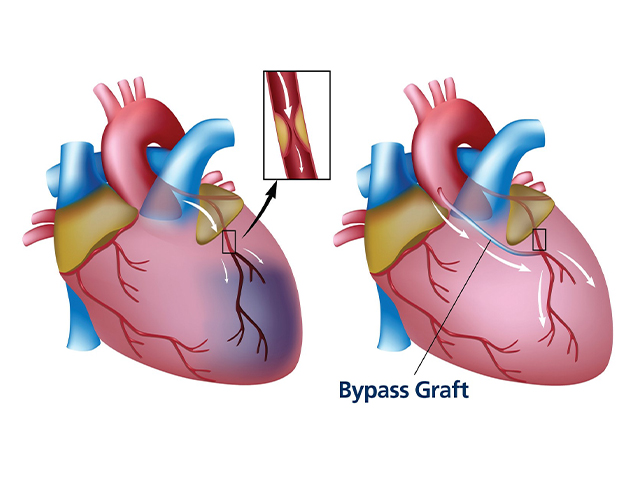
What is Coronary Bypass Surgery
When there is a narrowing or blockage in the coronary arteries that feed the heart, the heart muscle cannot feed itself adequately. Coronary bypass surgery is the procedure for creating new vessel bridges with vessels from other parts of the body to improve blood flow to the heart muscle. The aim of this surgery is letting the heart function properly with enough blood, not curing the causes (atherosclerosis, coronary artery disease, etc.) of artery blockage.
How is Coronary Bypass Surgery Performed?
Generally taking 3 to 6 hours, coronary surgery is an open-heart surgery done under general anesthesia. First the chest is opened with a long incision, then the heart and lungs are disabled by the help of a heart-lung machine. While the tasks of heart and lungs are performed by heart-lung machine, the heart is temporarily stopped. The surgeon then will need a section of healthy blood vessel. This vessel is preferably taken from alternatives inside the chest wall to limit incisions, or from lower leg. The healthy vessel section is then placed in such a way that the blood goes beyond the clogged coronary artery. Depending on the number of clogs, several repeats will be performed and when all is finished, the surgeon will restore heartbeat.
Is Coronary Bypass Surgery Risky?
Ever-improving technologies and the development of newer protocols to protect the heart during the time stopped have reduced the risk of coronary bypass surgery. However, there still will be risks associated with the patient’s advanced age, severe loss of contraction strength due to previous heart attacks, and significant loss of function in non-cardiac organs and systems
Recovery tips after bypass surgery
By coronary bypass, blood will be supplied beyond the occluded vessel since normal nutrition of the heart muscle is ensured, however, arteriosclerosis will continue. The patient should avoid the risk factors that cause arteriosclerosis, such as obesity, high blood pressure, diabetes, high blood lipids and smoking. Thus, atherosclerosis should be regularly kept under control after bypass surgeries. In the first 2 months after the bypass, heavy physical activity should be avoided for the healing of the sternum. However, later on, the patient should return to his professional life and follow an active life. By consulting a doctor, enough physical activity must be added to daily life. At least, an hour of walking everyday would be great.
Coronary Bypass Surgery? Dr. Ada’s Team is here to assist
We are a professional team supplying Romanian people with the best surgeons of Turkey in the best hospitals of Turkey. Whenever you feel you need to get top medical service for any issue, you can call us and get first quality advice and assistance for health in Turkey. Moreover, we will follow you up personally here in Romania, to make sure you get the best results.
So if you’re looking for information about coronary heart disease or coronary bypass surgery, contact us immediately. Let us be your medical companion on the way to a happier and healthier life.

